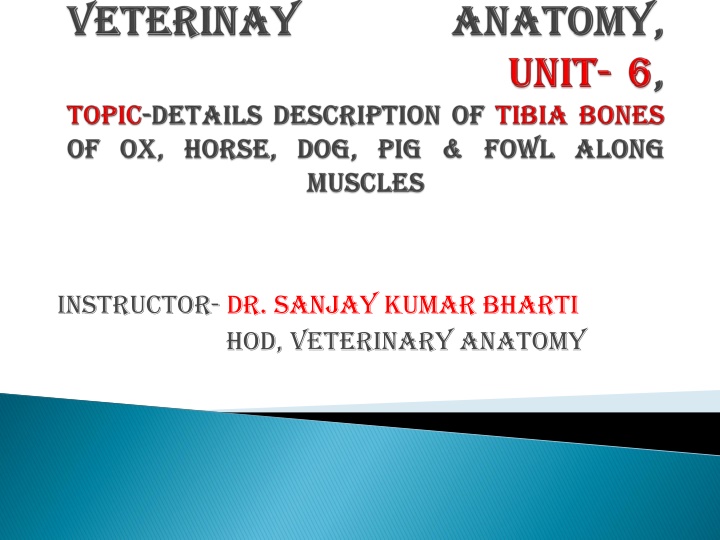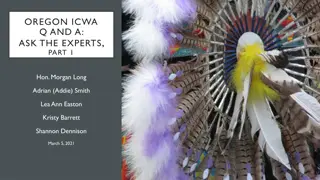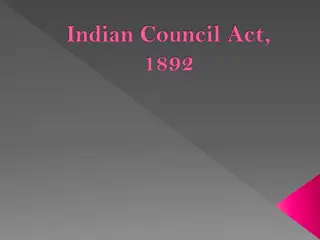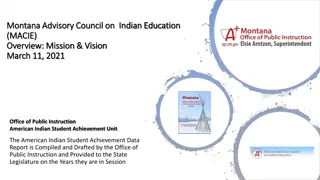
Indian Health Service Overview and HR Initiatives
Indian Health Service (IHS) provides a snapshot of its workforce and highlights HR initiatives supporting recruitment and retention. Expansive use of compensation authorities, scholarship programs, and Title 38 pay authorities are emphasized in this overview.
Download Presentation

Please find below an Image/Link to download the presentation.
The content on the website is provided AS IS for your information and personal use only. It may not be sold, licensed, or shared on other websites without obtaining consent from the author. If you encounter any issues during the download, it is possible that the publisher has removed the file from their server.
You are allowed to download the files provided on this website for personal or commercial use, subject to the condition that they are used lawfully. All files are the property of their respective owners.
The content on the website is provided AS IS for your information and personal use only. It may not be sold, licensed, or shared on other websites without obtaining consent from the author.
E N D
Presentation Transcript
Instructor- DR. SANJAY KUMAR BHARTI HOD, VETERINARY ANATOMY
The tibia is a long bone placed obliquely downward and backward between the stifle and the hock joints. It consists of a shaft and two extremities. Shaft The shaft is three sided above and becomes smaller and flattened below. It has three surfaces and three borders. The lateral surface is wide above and inclines gradually to the front of the bone distally. It is covered by the tibialis anterior. The medial face is subcutaneous, broad above and is slightly convex and rough for the medial ligament of the stifle, sartorius, gracilis and semimembranosus. The posterior face is flat. The upper fourth of this surface has a triangular area marked by the popliteal line for the popliteus. The rest of this surface is marked by rough lines for the deep flexor.
BORDERS-3 The anterior border is prominent in its upper third forming the tibial crest. It presents on its medial aspect a rough prominence for the semitendinosus. The rest of its extent is rounded and indistinct. The lateral border is concave and has the fibrous part of fibula applied against it in life. The medial border is thick and rounded in its upper fourth for the popliteus.
EXTERMITIES- 2, Proximal and Distal The proximal extremity is large and is made up of two condyles, a tuberosity and a spine. The tuberosity is anterior; it is continuous distally with the tibial crest and is for the straight ligaments of the patella. Between the tuberosity and the lateral condyle is the sulcus muscularis for the passage of the tendon of origin of the complex muscle. The condyles are medial and lateral. Each presents a saddle shaped articular surface above for the corresponding condyle of the femur and the meniscus. The condyles are separated behind the popliteal notch on the medial aspect of which is a tubercle for the posterior cruciate ligament. The lateral condyle has the rudimentary fibula fused with it on its lateral aspect and serves for the attachment of the lateral ligament of the stifle. The tibial spine is placed between the condyles whose articular surfaces are continued on the spine. It is bifid at the summit. Before and behind the spine are the depressions for ligaments
Distal extremity The distal extremity is smaller than the proximal. The articular surface presents two deep sagittal grooves. The malleoli are bony prominences on the outer marigins of the sagittal grooves. The medial is smaller and fused with the distal extremity of the tibia. The medial groove is bounded on the medial aspect by the medial malleolus (which is fused to the tibia). The latter is rough medially for ligamentous attachments and articulates laterally. Its anterior part is prolonged downward to end in a blunt point. The lateral groove is separated by a sharp ridge from an outer area, which is for the lateral malleolus. The latter completes the lateral groove.
Horse The medial border presents at its upper part a small tubercle for the popliteus. The popliteal line is prominent. The anterior tuberosity is grooved vertically. Below the lateral margin of the lateral condyle is a facet for the fibula. The grooves on the distal extremity are oblique. The lateral malleolus is fused to the tibia.
Pig The shaft is slightly curve. Tibial tuberosity is grooved in front and a narrow sulcus separates it from the lateral condyle. Proximal part of the tibial crest is very prominent.
The shaft forms a double curve, the proximal part is convex medially and the distal part convex laterally. The tibial crest is prominent. The facet for the fibula is on the postero-lateral aspect of the lateral condyle. The distal extremity presents laterally a facet for fibula.
The tibia fuses below with the upper row of tarsal bones and hence called tibio-tarsus. The tibio tarsus is the longest bone in the body. The proximal extremity is large and irregular. The distal extremity comprises of a trochlea behind and two condyles in front, representing the fused bones of the upper row of the tarsus.






















